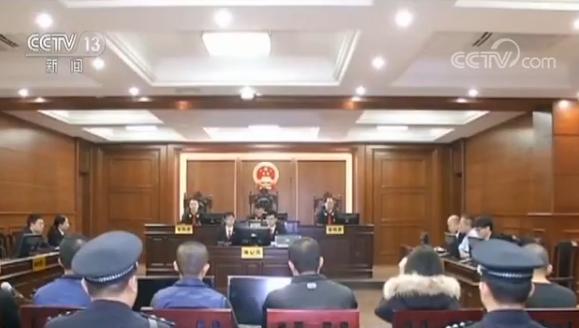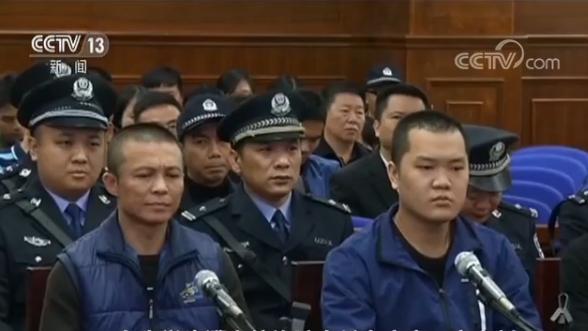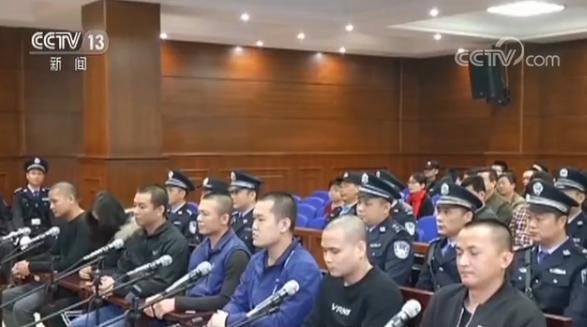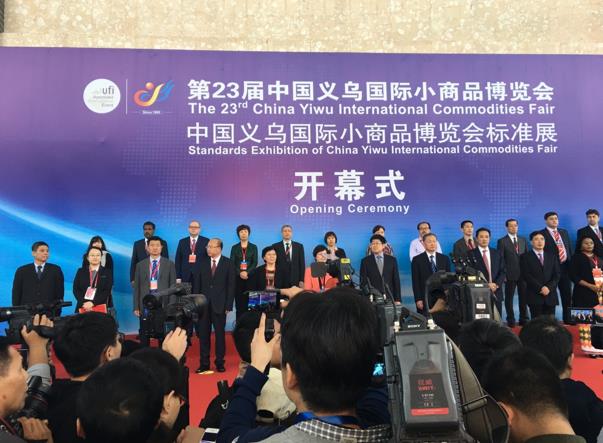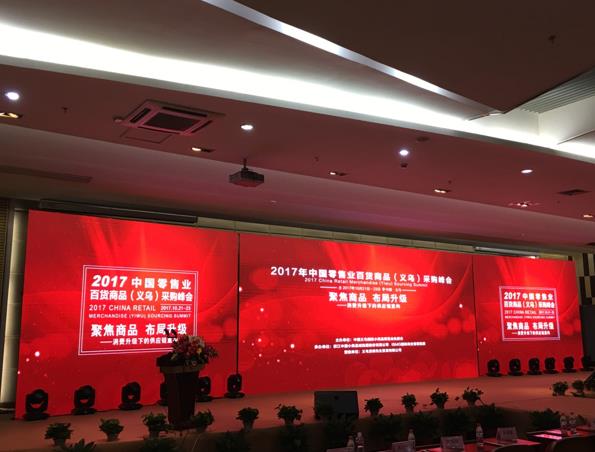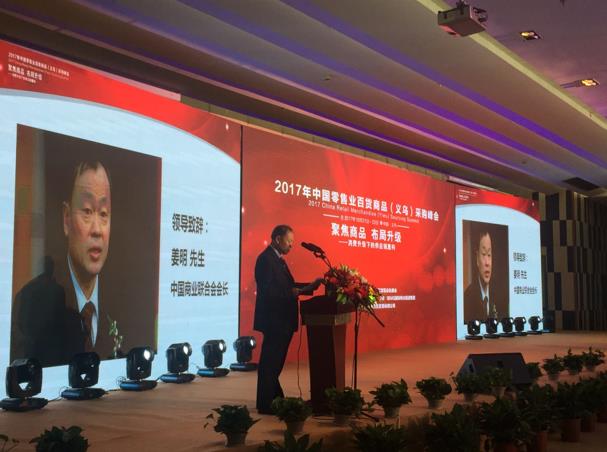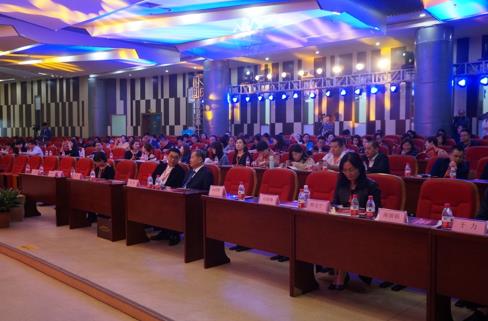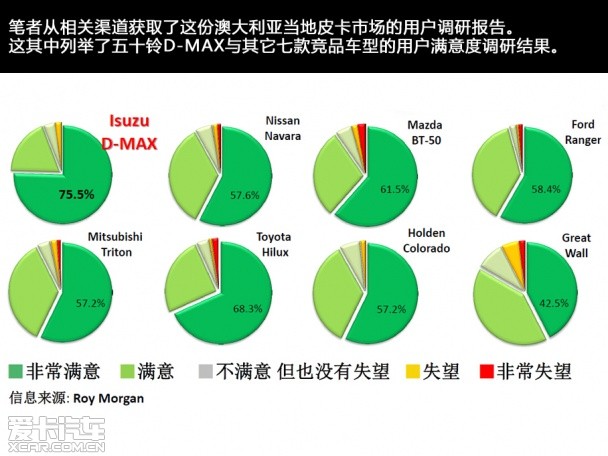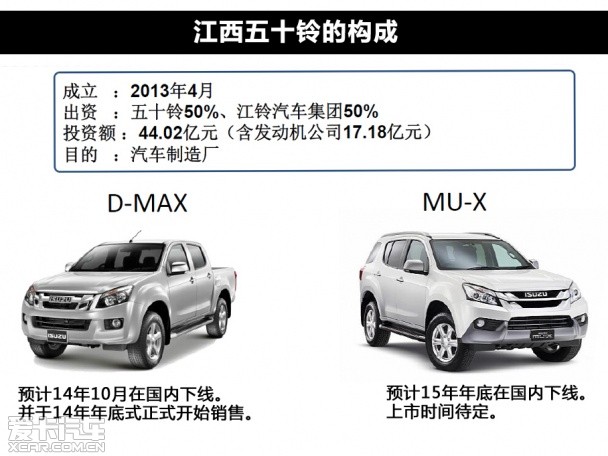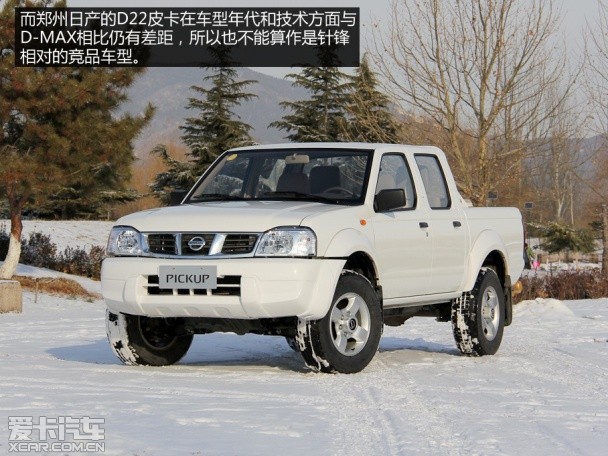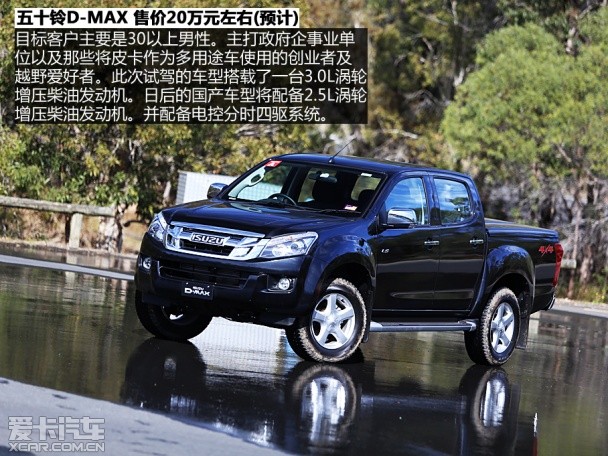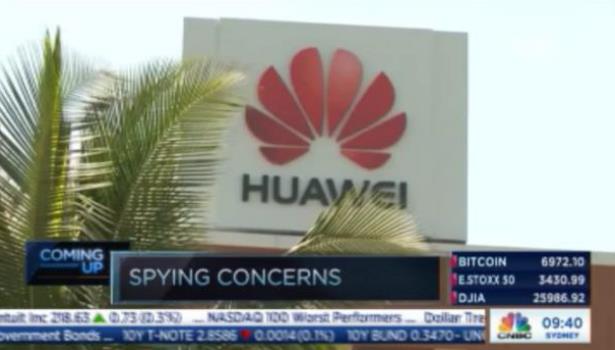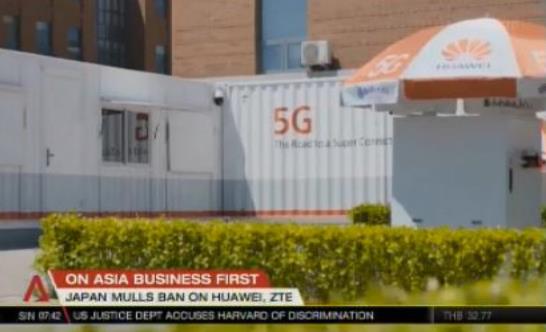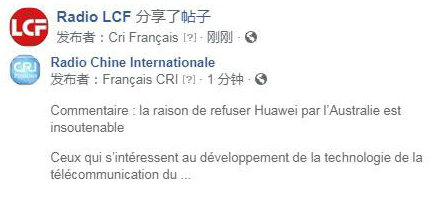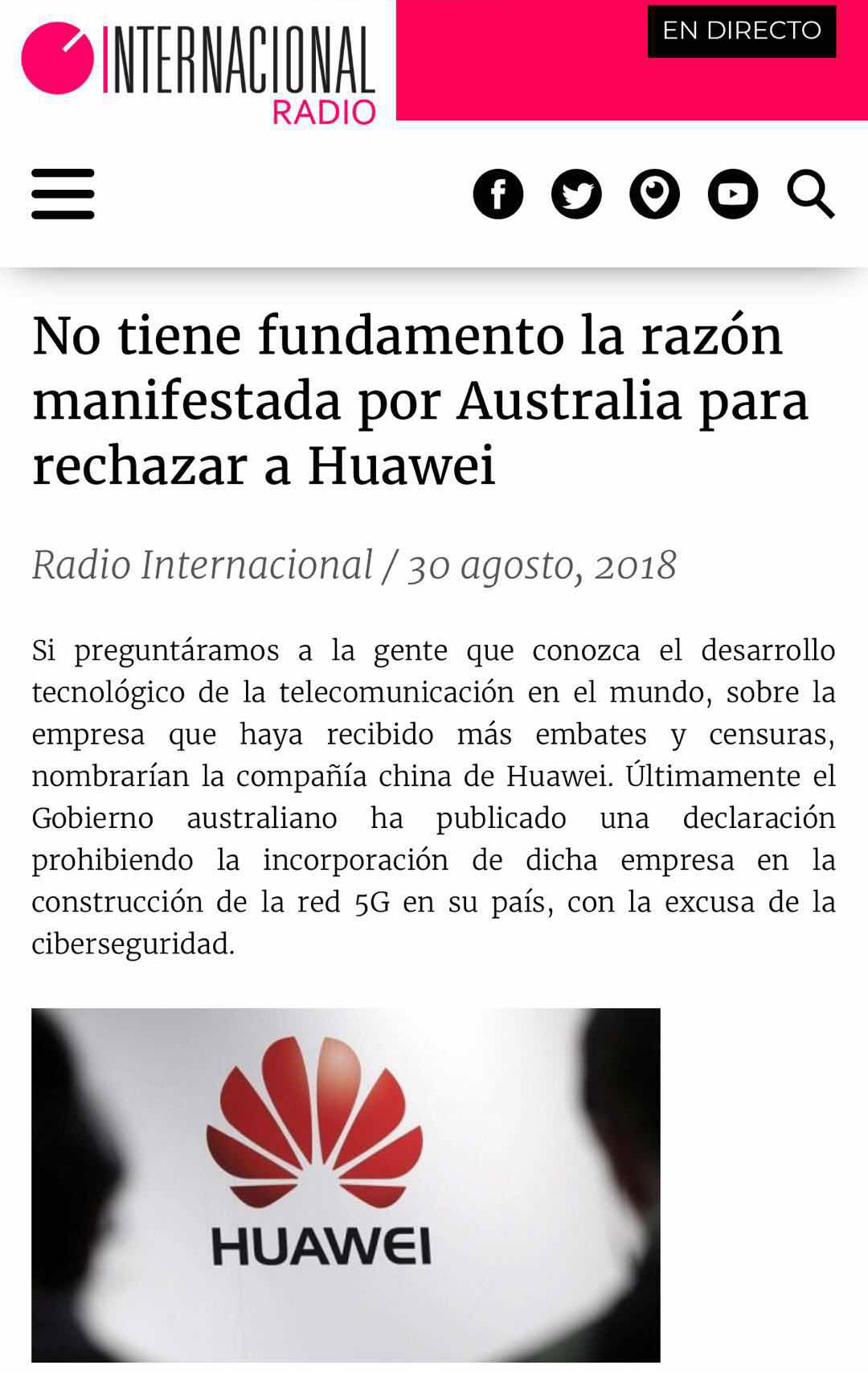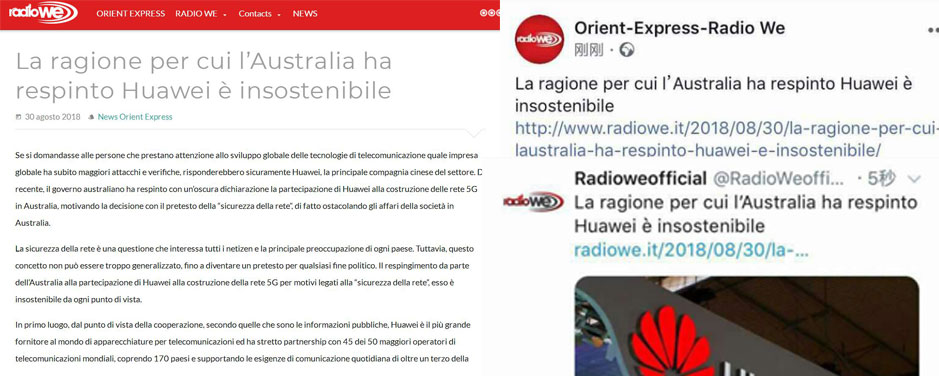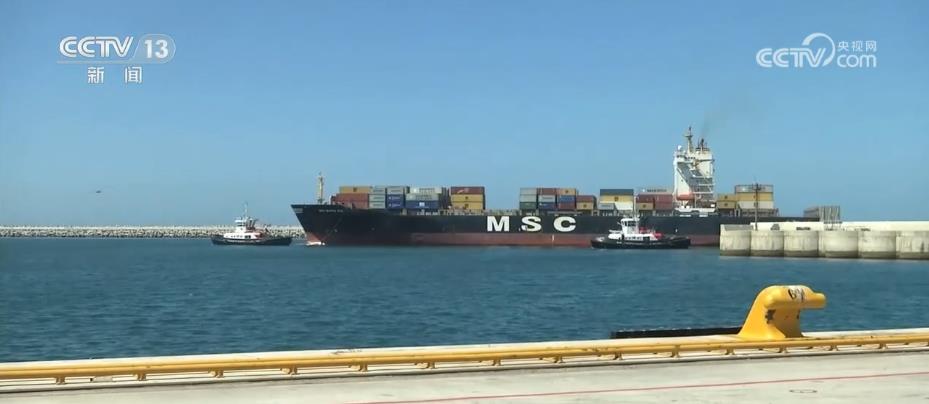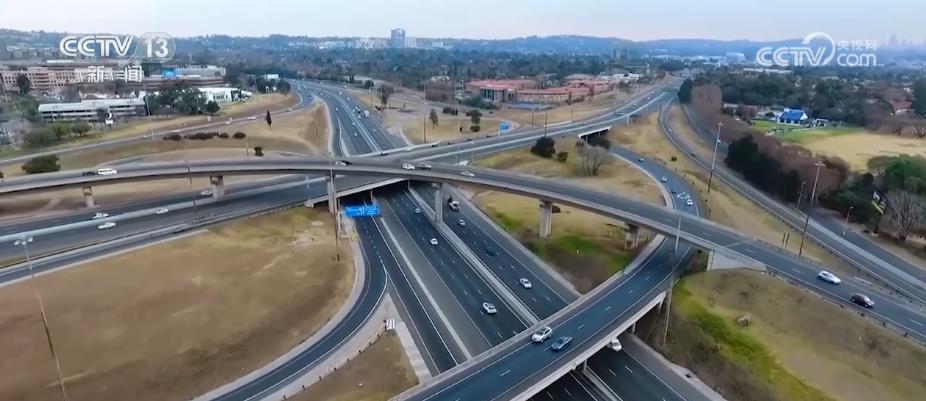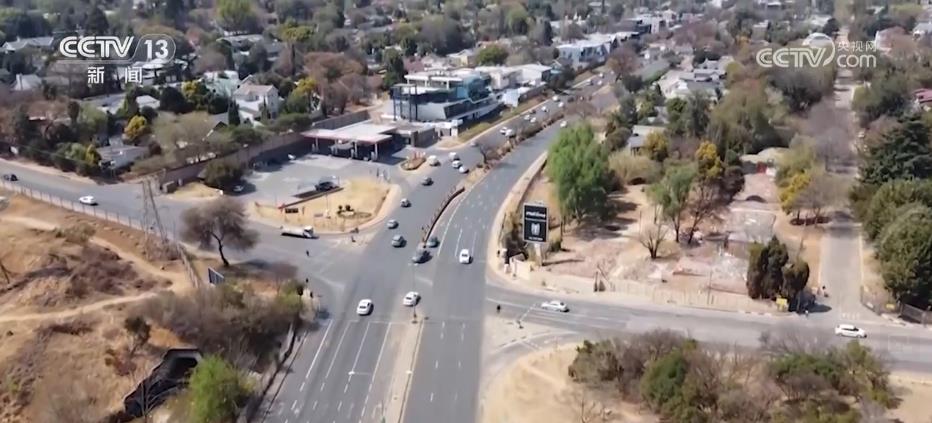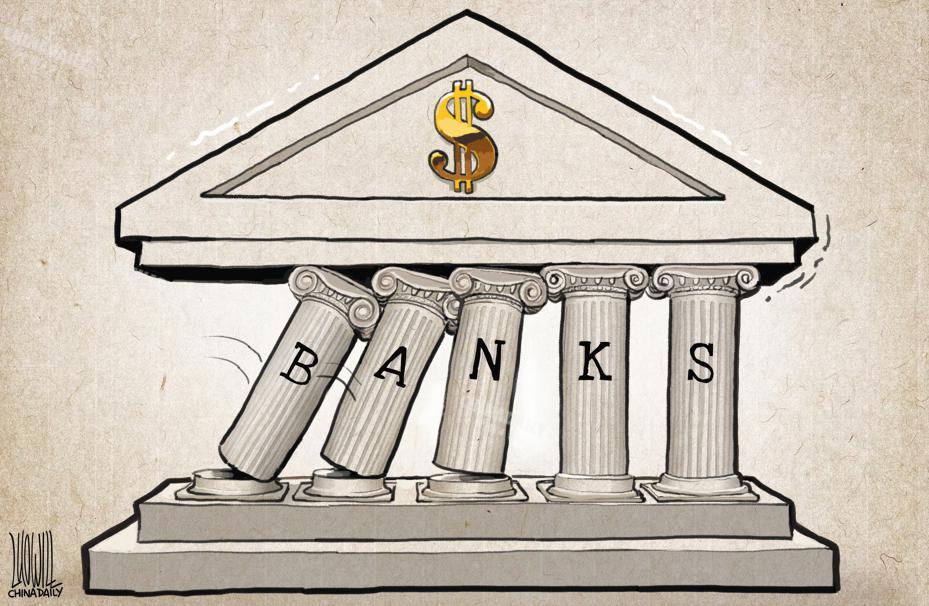() The operating comments of the Board of Directors in 2023 are as follows:
I. Discussion and analysis of business conditions
The company is a comprehensive development enterprise dedicated to the development of intelligent manufacturing sector with special purpose vehicle and robot manufacturing as the core, urban operation sector with real estate development and urban renewal as the core, and smart livelihood sector with property services and medical care as the core as the three business systems. Relying on the core technology and resource advantages of each sector, it is diversified and complementary, and cooperates to build an ecological capacity of "great urban service".
In 2023, the operating income was 18.301 billion yuan, down 19.69% year-on-year, and the main business income of the urban operation sector accounted for the proportion.
87.87%; The net profit attributable to shareholders of listed companies is-3.651 billion yuan; The asset scale was 56.489 billion yuan, a year-on-year decrease of 19.73%; Net assets were 8.071 billion yuan, down 35.12% year-on-year; Net operating cash was 1.116 billion yuan, a year-on-year decrease of 42.19%.
-External environment for the company’s development in 2023:
In 2023, the macro-economy stabilized and repaired, the per capita income rebounded moderately, the previous backlog of demand was gradually released, consumption recovered moderately, infrastructure investment maintained growth, and the annual GDP growth rate rebounded by 2.2 percentage points to 5.2%. As far as the real estate industry is concerned, although the policy of stabilizing the property market continued to be introduced during the reporting period, such as the central bank continuing to guide the downward trend of loan interest rates, the implementation of "recognizing houses but not loans", and loosening the purchase restriction policy in some places, residents are worried about the downward trend of house prices and the risk of delivery of some real estate enterprises, and preventive savings behavior still exists. In this context, according to the investment and sales data of real estate development in 2023 released by the National Bureau of Statistics, the supply and demand sides of the real estate market are still under pressure, and the data continues to decline. The national investment in real estate development decreased by 9.6% year-on-year; The newly started area of real estate decreased by 20.4% year-on-year; The annual sales volume of new commercial housing was 11.7 trillion, down 6.5% year-on-year;
Among them, the sales of existing homes increased by 19.3% year-on-year, the sales of forward houses decreased by 10.8% year-on-year, the prices of first-tier cities declined year-on-year, and the prices of second-and third-tier cities rebounded year-on-year, but the absolute level was still low. Among the sources of funds for real estate development, 19.1 trillion yuan was put in place this year, down 13.6% year-on-year, and the overall operating pressure of the real estate industry chain was great.
—— Company performance in 2023:
Affected by the continuous downward trend of the overall market of the real estate industry, the sales prices of some real estate projects of the company have declined, so it is necessary to test the asset impairment according to the requirements of accounting standards and extract reasonable impairment reserves. The total loss of asset impairment and credit impairment is-2.911 billion yuan, resulting in the company’s profit loss; On the other hand, during the reporting period, the consolidated sales amount decreased by about 7.65% year-on-year, and the corresponding reduction in the payment amount put a great pressure on the development payment, which increased the operating costs and expenses of the project, extended the development and construction cycle of some projects, and may further reduce the project income in the future. On December 31, 2023, the balance of cash and cash equivalents in Dima’s consolidated balance sheet was RMB 1.300 billion, and bank loans and other loans due within one year totaled RMB 10.366 billion. Considering the liquidity risk, Lixin Certified Public Accountants, the company’s auditor, issued an unqualified audit opinion on the company’s 2023 financial report with significant uncertainties related to going concern.
Under the pressure of declining sales of real estate business and repayment, the company continued to maintain liquidity stability by means of extension, interest rate reduction and interest payment first. In 2023, the company’s total interest-bearing liabilities were 14.377 billion yuan, down 8.11% year-on-year. The net cash flow generated by financing activities was-2.189 billion yuan, and the debt was still in a net repayment state, achieving a net operating cash flow of 1.116 billion yuan. In the face of huge liquidity pressure, all management and core employees always adhere to the principle of "not lying flat, surviving", strive to stabilize production and operation, and make every effort to ensure the progress and quality of project delivery to ensure financial security; Improve the company’s fund management ability and refined operation level, reduce costs and increase efficiency, and return particles to the warehouse; Optimize the organizational structure and performance, ensure the stability and efficiency of core backbone personnel, and polish stronger endurance and tenacity; According to the market and its own strategy, we will continue to flexibly change direction and speed, expand light asset business and non-housing business, find new directions, and gradually get out of the predicament.
1. The layout of intelligent manufacturing business is "going out to sea" and actively expanding overseas markets.
During the reporting period, while stabilizing the domestic market, Dima Industrial Special Purpose Vehicle gradually focused on overseas, explored and explored key markets, actively established stable sales channels and cooperative partnerships, enhanced the brand’s popularity in overseas markets, and laid the development foundation for the later "going out to sea" strategy. The company carefully incubates two robot brands, "Tingjie" and "Aoting", equips excellent R&D team, develops domestic and foreign sales outlets, builds a sales platform, and gradually realizes the all-round development of domestic and international two-way business through three intelligent products, namely orchard service robot, fire fighting robot and cleaning robot.
2. Continue to empower smart people’s livelihood services to help future development.
During the reporting period, the company’s property company, Tohara Hitoshi, increased its management area by nearly 20%, insisted on scientific and technological investment, built an all-round and three-dimensional safe and intelligent community, and continued to implement a diversified service format combination strategy covering residential, commercial, office buildings, government public buildings, industrial parks, hospitals, embassies, etc. In combination with the brand "Evergreen Society" of medical health care, we will focus on promoting the project landing and large-scale operation of the medical health care industry, focusing on the combination of medical care and health care, and developing an integrated platform for community home wisdom and old-age care with personalized needs of silver hair, so as to empower the smart people’s livelihood business to grow steadily in both directions.
3. Expand the business of building, selling and servicing, and focus on light to seek a breakthrough.
During the reporting period, in the face of the continuous downward pressure of the real estate market, the company made every effort to ensure the delivery of buildings, give full play to its competitive advantages in terms of product strength and online customer acquisition, expand light asset business such as agent construction and agency sales, establish an operating system for building and selling services, and strive to cross the industry turning point and painful period.
4. Maintain credit stability and fully guarantee liquidity safety.
During the reporting period, the company obtained the credit tracking rating from Far East Credit Rating Co., Ltd. to maintain AA+ and maintain the credit rating unchanged; During the reporting period, the company managed stably to guarantee delivery, and strived to extend the existing financing and renew loans. In mid-April, 2023, the asset-backed securities of the Sino-Thai Asset Management -SAC Building Trust Beneficial Rights Asset Support Special Plan were successfully renewed for three years, and the interest payment of the non-public issuance of special corporate bonds for housing leasing was completed, and investors did not exercise the option of selling back, which continued to gain the trust of financial institutions and the recognition of the capital market.
5. Adjust and optimize the organizational structure to achieve high-efficiency management.
During the reporting period, the company actively responded to the current market situation, continuously improved and optimized the internal organizational structure, achieved streamlined and efficient management, and further reduced costs and increased efficiency. In terms of organizational structure, during the reporting period, the company continuously made strategic adjustments, and completed a series of actions, such as organizational transformation, fighting capacity improvement, and stable efficiency improvement, to maintain the stability of core talents and ensure the salary, benefits and career development of core talents.
(II) Key work in sub-sectors
Ii. the industry in which the company is located during the reporting period.
In 2023, the domestic and international environment is still complicated, and global geopolitical risks and the continuous interest rate hike by the Federal Reserve also bring about global capital market turmoil. The downward trend of exports and the adjustment of domestic real estate market have suppressed the recovery of domestic demand to a certain extent, which has brought different degrees of pressure on economic growth, employment and prices. China’s steady growth policy has continued to increase, and the overall economy has maintained a rebound momentum, basically in a stable range.
1. Intelligent manufacturing plate
1) Special purpose vehicle manufacturing
From the perspective of special vehicle segmentation, the market share of new energy vehicles will continue to increase in 2023, from 25.6% in 2022 to 31.4% in 2023. With the technical progress and supply upgrade of new energy vehicles continuing to iterate, the subsequent special vehicle market will gradually continue to transform from traditional energy to new energy. The rapid development of the export of special purpose vehicles is also one of the important changes in 2023. In 2023, the export of special purpose vehicles was 36,000 units, up by 48% year-on-year. Although the demand for bulletproof vehicles decreased slightly due to the change of national payment habits, the overseas market space is still large. At the same time, at the moment when "safe production" is becoming more and more important, the market demand for public safety and emergency integrated vehicles such as fire fighting, medical treatment and emergency communication rescue is increasing, especially for special vehicles such as medical rescue, disinfection and prevention, and emergency communication. In addition, with the gradual recovery of residents’ service consumption and strong travel demand, the airport passenger traffic has improved significantly compared with 2022, which is also conducive to the normalization of the airport special vehicle market.
2) Robot business
In the past two years, with the support of industrial policies, industrial robots and service robots have developed steadily as a whole. The state has continuously improved the industrial policy of developing intelligent manufacturing, accelerated the intelligent transformation of traditional manufacturing industries, and encouraged and supported industrial enterprises to develop in the intelligent direction. Although the output of industrial robots decreased by 2.2% year-on-year in 2023, the Ministry of Industry and Information Technology, the Ministry of Science and Technology and other departments issued the "Robot Plus" Application Action Implementation Plan in 2023 to further support and promote the development of industrial robots. In 2023, the output of service robots increased by 23.3% year-on-year, and the market scale of new robots such as medical robots and fire fighting robots in service robots also gradually increased. With the continuous integration of new generation information technology, biotechnology, new energy technology, new material technology and robot technology, the function and performance of robots will be greatly improved, which will further promote the application and development of robots.
2. Urban operation plate
1) Real estate development
In 2023, under the guidance of the general tone of "policy for the city", in addition to increasing the stability of the real estate market at the central level, local policies also continued to introduce large-scale favorable policies, including the first-tier cities with relatively tight previous policies, and also relaxed the policy of "recognizing the house but not the loan". Second-and third-tier cities also increased their support, including reducing the down payment ratio, lowering the mortgage interest rate, relaxing restrictions on purchases and sales, increasing the amount of provident fund loans, housing ticket placement, and housing subsidies. However, affected by residents’ wait-and-see mood, the overall real estate supply and demand remained weak throughout the year, and the market continued to decline.
1. Development investment
From the investment format, residential investment is still the mainstream. In 2022, the national investment in real estate development decreased by 9.6% year-on-year, of which residential investment accounted for 75.6%, and the amount decreased by 9.3% compared with the previous year, which was less than the non-residential investment such as commercial real estate (-10.5%). The planned construction area of residential land transactions nationwide decreased by 26.4% year-on-year. Under the background of weak real estate sales and tight capital turnover, the willingness of housing enterprises to take land has also decreased significantly.
2, construction and new construction
In 2023, the construction area decreased by 7.2% compared with last year, and the newly started area decreased by 20.4%, which was significantly larger than the overall construction area and real estate sales area. Under the background that real estate sales continued to weaken and the liquidity pressure of housing enterprises remained high, the decline in return on investment and the limited new financing were still suppressing the willingness to start new projects.
3. Sales area, sales amount and average sales price
In the whole year, the sales area and sales amount of new commercial housing in China were 1.117 billion square meters and 11.66 trillion yuan, respectively, down 8.5 and 6.5 percentage points from the previous year. The average price of sample residential houses in Baicheng is 16,185 yuan/square meter, which is basically the same as that in 2022.
From the perspective of the region, real estate sales in various places continue to weaken, and the decline rate is obviously differentiated. First-tier cities just need to be relatively sufficient, and the decline in real estate sales in the eastern region is relatively small. The sales amount fell by 5.7% year-on-year, which is better than the national average, while in the central region,
The sales amount in Northeast China decreased by 11.2% and 7.8% respectively.
Generally speaking, the real estate market is under pressure from many sides, the house price and transaction scale are weak, the activity of supply side and demand side is low, residents have obvious wait-and-see mood, and real estate sales continue to weaken. However, in the long run, China’s residents’ balance sheets are relatively healthy, with a substantial increase in savings in the past two years, followed by a continuous increase in policies to stabilize residents’ expectations, and a more balanced new urbanization layout. The purchasing power of real estate accumulated in first-tier cities is expected to boost the gradual release of demand for housing in second, third and fourth-tier cities, and the demand for real estate needs to be stabilized.
2) Urban renewal
The construction of the "three major projects" such as the transformation of urban villages in 2023 is an important starting point for steady growth. In April and July, the Politburo meeting clearly emphasized actively and steadily promoting the transformation of urban villages in megacities. In July, the policy details were promulgated and the Central Economic Work Conference continued to emphasize that the central bank also added 500 billion PSL quota support, and urban renewal in various places is expected to accelerate. Some cities, such as Guangzhou, have tried first, and all localities have actively explored new modes and paths. "Government-enterprise cooperation" has become an important mechanism to promote urban renewal into the fast lane and help cities develop with high quality. Urban renewal has brought new development opportunities to the business management industry.
3. Smart People’s Livelihood Plate
1) Property services
In 2023, the policy of "guaranteeing the delivery of buildings" was actively promoted, and at the same time, the increase in existing home sales also promoted housing enterprises to speed up the completion of existing homes. The completed real estate area increased by 17% year-on-year. According to the data of the China Central Index Research Institute, from the perspective of the management scale of listed companies in Hong Kong stocks, in the first half of 2023, the average management area of listed companies reached 140 million square meters, up 27.7% year-on-year, slightly higher than the same period last year.
(24.4%)。 In terms of structure, according to the published data for the first half of 2023, the performance of central enterprises is still the most outstanding, with revenue increasing by over 20%, local state-owned enterprises increasing by 18.44% year-on-year, while private property enterprises are also relatively stable, with an average revenue growth rate of 6.7% year-on-year, which shows the overall situation of increased concentration and stronger players. At present, high quality has become the "main theme" of the industry. Under the background that the industry development returns to the essence of service, the differentiated service quality formed by property enterprises based on their own service capabilities is becoming an important factor in evaluating the development capabilities of enterprises. Improving satisfaction with quality service and winning the trust of owners is the consensus and trend of property service enterprises, and will lead the industry to develop in a healthier and sustainable direction.
2) medical rehabilitation
With the acceleration of China’s population aging process and the decline of working-age population, the dependency ratio of the elderly population has increased. According to the latest population data of the National Bureau of Statistics, by the end of 2023, the population of China aged 65 and over will be 220 million, accounting for 14.9% of the total population in 2022 to 15.4% in 2023, and the demand for old-age care will gradually increase in the future. At the same time, with the continuous improvement of per capita GDP, the consumption market of the elderly group has not only increased in volume, but also diversified in demand. Combined with overseas experience, the consumption tendency of the elderly is also high. At present, China’s pension-related enterprises are still in the process of continuous exploration and improvement, and the supporting professional medical service personnel, elderly health care products and mature market-oriented pension health care institutions are still lacking. At present, China has gradually formed the "9073" pattern of providing for the aged, that is, about 90% of the elderly are providing for the aged at home, about 7% rely on community support and 3% live in institutions, which will be gradually optimized with the improvement of the health care policy system and the formation of the industrial ecological system.
Iii. Business of the Company during the reporting period
During the reporting period, the company engaged in the following three business segments: intelligent manufacturing, urban operation and smart people’s livelihood:
(A) intelligent manufacturing sector
1, special vehicle manufacturing
1) The performance is basically stable.
Dima Industrial’s overall order revenue, gross profit and net profit decreased slightly compared with last year, achieving an operating income of 791 million yuan, a decrease of 17.70% compared with last year, and a decrease of 2.13 percentage points in gross profit margin. During the reporting period, with the change of payment methods, the demand for bulletproof vehicles declined, but the company’s fire protection market, emergency market, public security market and operator market still maintained the first market share; With the increasing demand of emergency special market, the order of large emergency communication vehicles increased by about 39.16% year-on-year; Orders for new energy vehicles increased by 177% year-on-year.
During the reporting period, Dima Industry ranked among the top 100 private manufacturing enterprises in 2023, and won the titles of "Chongqing Technological Innovation Demonstration Enterprise", "Chongqing Enterprise Innovation Award", "Chongqing Artificial Intelligence Industry Development Alliance Governing Unit" and "Chongqing Excellent Private Enterprise", which is the recognition of Dima Industry’s technical strength.
2) Continue to invest in innovation and develop new technologies.
In the reporting period, the company carried out 36 R&D projects, including emergency communication, operation rescue, pure electric aircraft tractor, aircraft power supply vehicle, safety berthing system and mobile CT medical vehicle, and developed 18 new products, including extended bulletproof cash transport vehicle, nuclear and biochemical multifunctional detection fire truck, small equipment fire truck, ultrasonic inspection vehicle, mobile CT vehicle and multi-link extension mechanism.
During the reporting period, the company applied for and authorized 101 patents, including 6 invention patents. The company independently developed and completed the first multi-functional nuclear and biochemical fire truck in China, which has the ability of nuclear and biochemical detection and decontamination; Two-stage/three-stage side pull realizes performance improvement and verification, and realizes product marketization; Pure electric aircraft tractor uses the latest three-electric integration technology to improve the stability of electrical system.
In the aspect of joint research and development between schools and enterprises, the company cooperated with Chongqing University of Posts and Telecommunications to undertake the special key research and development project of Chongqing’s technological innovation and application "Research and Development and Application of Multi-modal Coordination and Transportation Control System for Special Vehicles in Typical Scenes"; In the national key research and development plan "Distribution and Detection of Covid-19 Variants of Sewage", which is led by the Physical Evidence Identification Center of the Ministry of Public Security and undertaken by many related research institutes, Dima Industry participated in the research and development of one of its sub-projects "Research on Integrated Automated Mobile Equipment for Covid-19 Detection and Analysis in Sewage".
3) Build a quality management system and complete large-scale guarantee tasks.
Dima Industry has further promoted the quality control system of the whole process, and established a series of detailed rules and standard control documents in the aspects of quality system construction and evaluation, product development, manufacturing process and supplier quality management, and quality assessment and post-evaluation. During the reporting period, the company provided 31 after-sales service technical support and guarantee for disaster rescue, large-scale activities and emergency drills in 21 provinces and cities, including escorting the launch of Shenzhou 16, Hangzhou Asian Games and Gansu earthquake rescue.
4) Actively expand foreign business and realize the growth of export business.
During the reporting period, Dima Industry focused on Africa, the Middle East and Southeast Asia, explored key markets, and landed in government projects in C? te d ‘Ivoire and emergency communication vehicle projects in Hong Kong Telecom.
2. Robot business
The company’s "Tingjie" and "Aoting" robot brands, product applications cover urban emergency management (fire protection, communication security, dangerous accident handling), agricultural operations, logistics operations, safety inspection and cleaning maintenance.
1) Increase investment in scientific research and steadily realize product development.
The company’s "Tingjie" fire-fighting robot inherits the advantages of Dima Industry in the fields of public security, emergency and communication for more than 20 years, and the sales orders of fire-fighting robots have been completed in batches, which has outstanding advantages such as large flow, strong power, high passability and explosion-proof safety, effectively improving rescue efficiency and ensuring life safety; Multifunctional riot detection robot realizes order contract; Pre-detection communication robots and other products were unveiled at the 11th China International Police Equipment Expo, which helped the smart police to build a visual, manageable and usable information capability and provided an integrated overall solution for police actual combat.
The intelligent agricultural special robot developed by the company "Tingjie", with its self-developed "RCU" control platform technology, has created the industry’s top mobile chassis of the vehicle-gauge robot, and created an all-terrain chassis technology platform by using the design technology of balance, suspension and swing arm crawler wheel to meet the requirements of all-terrain robot operation. It has deeply explored the integration of modern agricultural needs and cutting-edge technology, and launched an agricultural plant protection robot with multi-function, modularization, high durability and easy maintenance.
Aoting Robot, a subsidiary of the company, focuses on the research and development of waterless commercial cleaning robots. At present, it has applied for more than 66 intellectual property rights, and is committed to providing "clean+"intelligent solutions for customers in commercial and industrial fields, redefining the cleaning standards in the field of intelligent cleaning, and won the "INCLEAN Innovation Excellence Award of ISSA, a global cleaning association".
2) Layout the international market and expand the global business.
During the reporting period, the company officially laid out overseas markets, and its products were unanimously recognized by overseas customers. Aoting cleaning robot products have been exported to Singapore, Hongkong, Taiwan Province, Australia, Saudi Arabia and other regions. At present, the company has set up five sales and after-sales service centers in China, and there are 70+ service outlets in the country, with an accumulated service area of 11 million square meters and an accumulated service time of 66,000 hours.
(2) Urban operation sector
1. Real estate development
During the reporting period, due to the continuous downturn of the market, the overall operating income of the company’s real estate was 15.742 billion yuan, down 22.03% year-on-year, and the gross profit margin was 12.47%, down 10.46 percentage points. Dongyuan Real Estate firmly guaranteed the delivery work throughout the year, maintained steady operation and liquidity safety, upgraded and adjusted the organizational structure, reduced costs and increased efficiency, refined operation, expanded the business of agent construction and agency sales, helped the development of light assets business, and fully responded to the systemic risks of the industry.
1) Ensure the completion of the delivery work, operate steadily and practice long-termism.
Dongyuan Real Estate combines the company’s actual situation and market environment, completes the development and construction of stock projects, improves the quality of projects and services, and ensures the timely delivery of projects. In the still strict market environment, the delivery of about 25,000 sets of 41 projects and 55 groups was completed in the whole year, and the number of delivery sets increased by about 4% compared with last year. In the whole year, 189 quality inspections were completed, involving 30 key projects, and the delivery quality of project facades and public areas was significantly improved compared with last year. During the reporting period, Dongyuan Real Estate continuously upgraded various management and control systems such as financing, investment, marketing, operation, etc., and strived to improve efficiency and quality in operation, and won the honors of "TOP50 Comprehensive Strength of China Housing Enterprises" and "TOP30 Brand Value of China Housing Enterprises".
2) Vigorously expand the light asset business of "building and selling clothes"
While stabilizing the basic operation of the re-investment project, we will establish an operating system for building and selling services, form a white paper and a management manual for building and selling services, and adhere to the strategic transformation of value creation, one policy, and assistance. During the reporting period, the company undertook a total of 14 construction and sales service projects, with a contracted amount of 283 million yuan, covering the whole process of agent construction, consignment, consulting, escrow, urban renewal and other types.
The company actively tries to explore and implement the dreamer business model, inherits the excellent genes of Dongyuan Real Estate, integrates the advantages of Dongyuan Real Estate in product research and development, precision work quality and supply chain, and is committed to providing customers with the whole construction, main and auxiliary materials and home improvement services integrating design, customization, soft decoration and home appliances, and quickly completes the layout in more than 10 cities such as Chengdu, Chongqing, Wuhan and Mianyang, with a total of 143 sets of contracts signed, with a contracted amount of 12.24 million yuan.
3) Product strength is continuously upgraded to realize value transfer.
Dongyuan Real Estate continues the core service orientation of "customer value first", realizes the lean design of products, and deeply digs into the general layout and the ultimate value of individual products; Through the innovative "customer value group", we provide professional auxiliary support for accurate distribution of product value, realize seamless connection from market research to R&D, deeply interpret customer needs, tap product potential, and ensure that product value is delivered to marketing and customers without loss. During the reporting period, its projects won the honors of "Gold Award for Real-life Display of Asian Habitat Landscape Award", "Gold Award for Residential Landscape (Region) of the 10th Garden and Metallurgical Cup Professional Award", "Silver Award for Urban Renewal of Global Habitat Design Award" and "Silver Award for International Residential Building of London Design Award".
4) Optimize internal structure and management system, and strengthen marketing management.
Dongyuan Real Estate actively responded to market changes, adjusted its internal structure and business strategy, optimized its internal management level, and returned the particles to the warehouse to reduce costs and improve efficiency.
In terms of marketing management, we will make full efforts to acquire customers, build and improve the marketing model and organizational ability of online customer acquisition, customer operation and maintenance, and self-expansion of customers, so as to increase efficiency and reduce costs. In the field of online customer acquisition, Dongyuan has built a customer acquisition team in Tik Tok, including sales and self-incubation. Based on the short-straight and double-opening customer acquisition model, the monthly turnover has broken 100 sets, accounting for 20% of the transactions; On this basis, the company created a series of professional classes of "Training in Actual Combat", which summarized and precipitated a set of actual combat tactics of the developer’s platform sales in Tik Tok, and successfully trained and exported the professional ability.
2. Urban renewal
Dongyuan Zhixin has the ability to develop and operate composite space, with both light and heavy assets. Relying on the comprehensive business management ability of investment, financing, construction, management and retirement, it focuses on non-standardized project scenarios and integrates the comprehensive services of urban renewal. At present, Dongyuan Zhixin operates 6 commercial projects with a total operating area of 391,000 square meters, covering shopping centers, office buildings and community businesses. During the reporting period, Dongyuan Zhixin adhered to the concept of organic renewal and long-term operation, continuously established its ecological capacity around "business+"products in the field of urban renewal, provided a good long-term asset management service plan for its clients’ assets, and became one of the "Leading Brands of China Real Estate City Renewal" in the 2023 China Real Estate Brand Value List of China Central Academy of Sciences.
(3), wisdom and people’s livelihood plate
1. Property services
1) Diversified business development, continuous deep cultivation to achieve scale.
During the reporting period, under the background of fluctuating macroeconomic environment and increasingly fierce market competition, Hihara Hitoshi continued to build a diversified service portfolio covering residential buildings, commercial complexes, Grade A office buildings, government public buildings, industrial parks, hospitals, embassies, etc., and achieved breakthroughs in many new formats such as universities, airports, State Grid, subways, troops, Asian Games venues, etc. By December 31st, 2023, Hihara Hitoshi had operated and managed 573 property projects in 76 cities in China, with a total construction area under management of about 60.2 million square meters, up about 19.0% year-on-year. During the reporting period, the company continued to pay attention to changes in market demand, coordinated and coordinated regional resource sharing and complementary advantages, strengthened the horizontal alliance between regional and professional BU, expanded the synergistic effect, broadened the market contact area, planned the high-quality market development structure, and continued to create a beautiful city.
2) Continue to empower science and technology and build a digital system.
During the reporting period, Hihara Hitoshi adhered to the investment in science and technology, and helped to build a digital system in many aspects, including East Station applet, material procurement platform, financial information system optimization, unified data platform construction, etc., and comprehensively laid out four intelligent sectors, namely "Smart Bank", "Smart Eye", "Smart Union" and "Smart Management", as well as the IOT smart community platform, integrating security precautions, video surveillance, online alarm, command and dispatch, and emergency management. The company embraces AI in an all-round way, makes use of large-scale model technology at home and abroad, and constantly explores the combination of AI and business in combination with business conditions. At present, it has been applied in two market management scenarios.
3) Enhance brand awareness and service quality.
Hihara Hitoshi continued to deepen the construction of the internal service system, and made continuous efforts in five categories: property renewal, on-site hardware, customer relationship maintenance, contact service and community activities. Enhance the deep link with customers through community activities such as old friends’ life festival and holiday festivals; Linkage platform, Mercure, renting and selling to create a community life market, providing owners with beautiful life services such as clothing care, purchasing daily necessities, maintaining household appliances, and renting and selling real estate; Continue to operate 400 call centers to conduct distributed full coverage research on all customers, so as to achieve normal customer service. During the reporting period, Tohara Hitoshi perfected and formulated such systems as "Reporting Management System", "Quality Management System" and "Quality Red Line and Management Risk Checklist", and won more than 20 awards such as TOP16 of comprehensive strength of China property enterprises in 2023, TOP15 of super service of China property enterprises in 2023, and Excellent enterprise of sustainable development of international property management services in 2023. In the customer satisfaction survey of Saiwei Consulting in Beijing in 2023, Hihara Hitoshi kept the top position in the industry with 91 points.
2. Health care
1) The company’s brand "Evergreen Society" strives to promote the project landing and large-scale operation of the medical and health care industry, and relies on four major pension products: home community, institutional pension, nursing and rehabilitation institutions and specialized institutions, focusing on the layout of high-end institutional pension and community home pension projects. The company has a pension service management information platform suitable for business management needs, which covers customer management, sales contract management and standardized evaluation of nursing level, and builds an intelligent management platform for all business information with modules such as operation, finance, medical service management, quality control and visual analysis (BI) of operation decision. Through the multi-scenario business practice of medical treatment+institution+community site+home medical care combined with four-level linkage mode, the integrated platform of community home-based smart pension-Changqing Community Care and Management Platform is developed to meet the individual needs of the elderly, which covers the functions of elderly management, home-based care bed construction, home-based care service, home-based smart security monitoring and management, meal assistance service, online service order placing, community home-based smart big screen and so on. During the reporting period, Changqing Society completed the formulation and training of version 1.0 of the standardized operation and management of cognitive disorders, and three institutions were certified as "cognitive friendly institutions"; Evergreen Society was selected as the 25th "China Kangyang Industry Operator with Comprehensive Strength" in Yihan Think Tank, and was shortlisted in the "List of Advanced Units and Advanced Individuals in National Pension Service to be commended" by the Ministry of Civil Affairs, and its two institutions were selected as "the first batch of smart pension application pilot demonstration in Chongqing".
2) During the reporting period, Evergreen Society established two old-age care institutions in fengjie county, Chongqing. At present, it operates one vocational training school, 12 old-age care institution projects, nearly 50 community service stations, and more than 2,000 beds, serving more than 20,000 customers, with a stable business scale. In the education business, the company provides vocational skills training, and the training base covers an area of 2,100 square meters. It has become the training base and appraisal base of the National Vocational Skills Appraisal Institute of Chongqing Municipal Health and Wellness Commission, and cooperates with famous experts from domestic top three hospitals and famous doctors’ studios to focus the courses on professional training sheets in health fields such as Chinese medicine, health care, nutrition and health. In the field of education for the aged, "Evergreen Show" is a middle-aged model training brand under Evergreen Society Education, which mainly carries out catwalk training courses for middle-aged models and provides training and exchange services related to art, culture and public welfare.
Iv. analysis of core competitiveness during the reporting period
1. Intelligent manufacturing sector
1) Competitive products and leading brand advantages
Dima Industry is committed to building a leading special-purpose vehicle brand in China, focusing on the research, production and sales of high-tech special-purpose vehicles, and establishing a domestic first-class special-purpose vehicle production line and production technology management system. It is a service provider of special-purpose vehicles and emergency industries with great strength and scale. The company has more than 300 kinds of products, such as emergency rescue support, bulletproof cash transport, airport ground equipment, robots, mobile service equipment, smart cities, etc. Its series of bulletproof cash transport vehicles, emergency communication command, network and information security, emergency rescue, medical fire protection and other system integration vehicles rank in the leading position in the industry all the year round, and it is a leading enterprise in emergency communication and emergency support equipment and services in China. Airport ground equipment series is also very competitive.
2) Advanced R&D technology and innovative ability
Dima industry adheres to the innovative concept and continues to invest in research and development. The company actively enhances its independent R&D and innovation capabilities, and has the ability to pass the production qualification examination and intellectual property declaration. Dima Industry has continuously optimized its products and upgraded its production technology, broadened its product spectrum and actively developed new products. At present, Dima Industry and its subsidiaries have authorized and accepted more than 400 patented technologies and intellectual property rights, and have cooperated with universities and research institutions for a long time for special declaration. The company has set up an intelligent network development team. Through the product development and production of emergency communication command vehicle, super-large national emergency mobile command platform, emergency base station vehicle, logistics support vehicle, on-site disposal vehicle and other models, it is equipped with intelligent IOT systems with independent intellectual property rights, such as multi-vehicle interconnection communication system, centralized control system, multi-network unified communication system, remote monitoring system, front-line emergency command system, etc., to solve the practical needs of information interconnection for customers.
3) Excellent quality control and after-sales service system
Dima Industry optimizes the certificate issuing process, after-sales expense process and newly announced prototype inspection process, formulates the certificate issuing management system and the announced prototype inspection management system, and establishes the robot APQP system document; Through the supervision and audit of ISO9001, ISO14001, ISO45001, ISO27001 and after-sales seven-star management system, the three-level management mode of customer communication, feedback and complaint mechanism is adopted to ensure product quality in multiple dimensions. The company has GB/T27922 certificate of perfection of after-sales service system and GB/T22080 certificate of information security management system, which optimizes the PDI work of customers’ vehicles and improves the satisfaction of customers’ vehicles. The quality department and the service department form a regular communication mechanism, and through training, the service personnel and the quality management personnel form a collaborative process, so that the customer feedback can get the fastest response and feedback, and bring high-quality user experience to customers.
4) Have a professional intelligent robot product line.
The company’s robot business has a professional team. Relying on the laboratory resources of colleges and universities, Aoting Robot innovates and changes the commercial clean robot technology, and independently develops 10,000-centimeter SLAM navigation technology, clean adaptive pressure and speed technology and HIAT-3D-Fusion environmental sensing technology with 8 categories and 20 sensor integrations, which has achieved the leading generation difference technology in the industry and will gradually become a world-class excellent robot enterprise integrating production, research and research in the future. Tingjie Robot focuses on the field of special robots and service robots, and makes use of the advantages of integration, communication and large manufacturing system for more than 20 years to build a professional data service platform+intelligent emergency, intelligent security and intelligent agricultural special robots, develop common core technologies and product platforms such as human-computer interaction, motion control, sensory transmission, explosion-proof and bulletproof, and strive to become a service provider of special robot equipment and solutions.
2. Urban operation plate
1) Fine management of balance between supply and marketing, and gradual transformation of both light and heavy.
Dongyuan Real Estate adheres to stable operation, ensures the delivery of products with high quality and good reputation in large quantities, runs through fine operation and safety management, dynamically reviews the ratio of storage to sales and balances the supply, marketing and storage structure based on inventory quantity, inventory structure, local market and actual flow rate; According to the rigid capital demand of the project, plan the supply rhythm, avoid the risk of supply interruption, make the project operation more reasonable and stable, and ensure the safe operation and stable development of the company. While stabilizing the basic operation of the re-investment project, we will quickly establish the operation system of building and selling clothes, which has the ability to expand and promote rapidly, and help the strategic transformation of both light and heavy.
2) High-quality competitive advantage of total product strength
Dongyuan Real Estate has always adhered to the product core orientation of "customer value first", and from the three dimensions of product, service and community operation, combined with the exploration and study of family and community life pain points and customer life needs, it has deeply explored the iterative upgrade of Dongyuan Real Estate products and services, forming Dongyuan’s unique big product brand. Ingenuity has created residential product brands such as "Printing the Yangtze River", "Printing", community-operated products and brands such as "Yuan-Ju Chang" and "Tong Meng Children’s Enjoy", and created a large productism with iteration, innovation, interconnection and co-creation, which is widely recognized by customers.
3) Maintain matching enterprise management efficiency.
Dongyuan Real Estate has an efficient and comprehensive enterprise management system, with clear organizational rights and responsibilities. In addition to the traditional "two management and two control", that is, managing plans, goods value, profits and cash flow, it has a professional and stable output, focusing on solving specific project problems, and can quickly penetrate and get through at the three levels of group, region and project, and make quick decisions and implementation, so as to avoid redundant processes and decision-making mechanisms from affecting business advancement. With the continuous deterioration and downturn of the market, the company can match the overall strategic deployment of the organization at each stage, clarify the key points, formulate strategies, and form a closed-loop iterative evolution of "organization-business-responsibility-landing" to meet the increasingly demanding requirements of the real estate market for the real estate operation system.
4) Excellent corporate culture and talent team to maintain market competitiveness.
Dongyuan Real Estate takes "for a new day" as its purpose, and has excellent employees and teams that meet the corporate cultural characteristics of "enterprising, keen and cooperative". It not only has high consensus, strong synergy and cohesion, but also has high pressure resistance and strong learning ability. Being able to keep up with the market’s rapid response and actively innovate and empower, it provides a talent guarantee for the long-term development of the company, and also provides an organizational guarantee for the promotion of the company’s competitiveness and corporate image.
5) Ability and experience in urban renewal.
Dongyuan Zhixin has the differentiated core competitiveness of complex space management and innovative content incubation, the ability of long-term operation-oriented planning design and the ability of full-cycle asset management to build urban renewal projects. According to the characteristics of the renewal business, the company re-planned and integrated the full-cycle business capabilities precipitated by previous organizations, and split them into different modules, such as policy consulting service, EPC management consulting, start-up and operation management, brand and content marketing service, asset planning and asset management advice, to meet the pain points of customers at different stages and in different scenarios.
3. Smart People’s Livelihood Plate
1) Rapid development of quality property management services
Hihara Hitoshi is committed to being a multi-format comprehensive service provider in the city, creating a multi-service format covering residential buildings, commercial complexes, Grade A office buildings, government public buildings, industrial parks, schools, hospitals, embassies, etc., and adhering to the development strategy of "big property-full value", forming a business pattern of both residential and non-residential double tracks, and realizing the comprehensive service advantage of IFM (integrated facility management service) professional empowerment. Adhere to the market-oriented transformation, and constantly innovate the service mode. The service scope covers East China, West China, Central China and Southwest China, and provides customers with property city services, better life services and comprehensive services such as foreign affairs, science and technology, and medical care. The three business lines complement each other, which is conducive to the continuous growth of the management scale of Dongyuan Renzhi and the continuous expansion of the market territory.
Tohara Hitoshi diligently explores customer needs, continuously improves the service experience, and meets customers’ differentiated needs in all directions through "Tohara", value-added service brands "Original Life", "Original Housekeeper" and innovative community operation products "Original Gathering". Hihara Hitoshi adheres to the service concept of "high growth+high customer satisfaction", always regards comprehensive residential services as the cornerstone of enterprise development, constantly improves property services and operational management capabilities, customizes value-added services around industry characteristics, and accumulates excellent reputation for property services and corporate honor; Hihara Hitoshi accelerates the development of non-residential business, explores value-added service opportunities for non-residential projects, innovates services and builds differentiated competitive advantages.
2) Deeply cultivate the service and quality of old-age care.
Di Ma Changqing Society has been deeply involved in Kangyang for many years, and has accumulated rich operating experience, and has a certain familiarity and sensitivity to the industry. As a comprehensive kangyang chain company, Evergreen Society’s four-level service circle, which combines medical care, old-age care institutions, community sites and home-based services, continues to deepen its layout to better achieve synergy and economic benefits. The company has diversified its business structure, with the old-age service as the core, and developed services related to big health vocational education and training, old-age education and silver hair consumption; Relying on Changqing Society’s professional and comprehensive service ability for the aged, it has developed from the center to the surrounding areas, reached in-depth strategic cooperation with the governments of the surrounding areas, civil affairs, health and health committees and other departments, and created benchmark pension projects by upgrading local pension facilities and services to meet the high-quality local pension needs of the elderly.
V. Main operations during the reporting period
In 2023, the operating income was 18,301,217,300 yuan, a year-on-year decrease of 19.69%; The net profit attributable to shareholders of listed companies was-3,650,897,900 yuan, down 4.40% year-on-year; The asset scale was 56,488,600,500 yuan, a year-on-year decrease of 19.73%; The net assets were 8,071,324,100 yuan, a year-on-year decrease of 35.12%; The net operating cash was 1,115,643,100 yuan, a year-on-year decrease of 42.19%. Among them, the main business income of the urban operation sector was 15,888,464,400 yuan, a year-on-year decrease of 22.37%, and the main business income of the intelligent manufacturing sector was 790,746,300 yuan, a year-on-year decrease of 17.70%.
VI. The Company’s Discussion and Analysis on the Company’s Future Development
(A) the industry pattern and trends
1. Intelligent manufacturing plate
1) Special purpose vehicle manufacturing
The application of special purpose vehicles is extensive and professional, and there are many market segments. The operation requirements and demand of special purpose vehicles in different application scenarios are also quite different. At the same time, with the development of intelligent manufacturing, special purpose vehicles are gradually deeply integrated with advanced technologies such as new energy and intelligent networking. Since 2023, "going out to sea" has gradually become the positive development direction of various enterprises, and the automobile export in 2023 is also very strong, which also brings new ideas for the breakthrough of the special purpose vehicle market in the future. Under the background of increasingly diversified application fields and increasing global geopolitical uncertainty, the market demand for public safety and emergency integrated vehicles such as fire fighting, medical treatment, emergency communication and rescue is increasing due to the need of prevention and treatment of safety, health and natural disasters. It has great development potential for special purpose vehicle manufacturing enterprises with strong R&D strength and scale advantages, and can quickly and effectively integrate new energy, emergency safety, intelligent manufacturing, etc., and launch green and environmentally friendly emergency application products with high technology added value to meet market demand.
2) Robot business
In 2023, the Ministry of Industry and Information Technology and other 17 departments issued the "Robot+"Application Action Implementation Plan, proposing that by 2025, the density of manufacturing robots will double compared with that in 2020, and the application depth and breadth of service robots and special robots will be significantly improved, and the ability of robots to promote high-quality economic and social development will be significantly enhanced. With the continuous progress of technology and the continuous expansion of application scenarios, the development momentum and broad market prospects make it a strategic highland for countries to compete for. As an important branch of the robot industry, industrial robots are mainly used in the production lines of automobile, electronics, food, medicine and other industries. By improving production efficiency and accuracy, industrial robots can help enterprises reduce costs and enhance their competitiveness. With the continuous progress of artificial intelligence technology, service robots have also begun to rise rapidly, and their application scenarios are becoming more and more diverse, covering many fields such as family services, business services, medical care, etc. I believe that the application scope and influence of robots will be more and more in the future.
2. Urban operation plate
1) Real estate development
In 2023, the overall real estate policy was favorable, but the performance of real estate sales remained sluggish, and customers took a wait-and-see attitude because of concerns about the delivery risk of faster houses and the risk of house prices. At present, the real estate policy has gradually shifted from demand side to stable supply. The Central Economic Work Conference once again emphasized actively and steadily resolving real estate risks, meeting the reasonable financing needs of real estate enterprises with different ownership equally, and promoting the stable and healthy development of the real estate market. In 2024, the Central Economic Work Conference and the National People’s Congress put forward clear requirements for optimizing the real estate policy and promoting the stable and healthy development of the real estate market, demanding to adapt to the development trend of new urbanization and the changes in the supply-demand relationship in the real estate market, speeding up the construction of a new real estate development model, increasing the construction and supply of affordable housing, improving the basic system related to commercial housing, meeting residents’ rigid housing needs and diversified and improved housing needs, helping to alleviate residents’ wait-and-see mood and promoting the normal release of stock savings. In the medium and long term, under the background of great changes in the relationship between new urbanization and real estate supply and demand, with the further optimization of the basic system of commercial housing, the orderly promotion of the "three major projects" such as affordable housing construction, "emergency and emergency" public infrastructure construction and village-in-city reconstruction, the new model of real estate development is expected to gradually become clear.
2) Urban renewal
The Outline of the 14th Five-Year Plan points out that it is necessary to further promote the new urbanization strategy with people as the core and implement urban renewal. In 2023, the Central Economic Work Conference also placed "new urbanization" in an important position in the new development model of real estate, and at the same time clearly emphasized the promotion of the urbanization rate of the registered population, which is still low at present. In the long run, China’s urbanization space is still large, and the deepening of industrialization has the effect of driving urbanization, and it can also bring about a smoother urbanization process of population flow. With the development of urban agglomerations, the second, third and fourth lines with good infrastructure, friendly business environment and affordable operating costs are expected to usher in more population inflows and industries in the future, bringing opportunities to the development and operation of commercial real estate in third-and fourth-tier cities. At present, all cities are actively promoting the formulation of supporting policies, steadily and orderly promoting urban renewal actions and promoting the implementation of urban renewal projects. How to highlight differentiation, individualization and customization in positioning and format, how to link service industries, effectively promote urban renewal, innovate value-added services, and meet market and consumer demand are the challenges that commercial operation management needs to face.
3. Smart People’s Livelihood Plate
1) Property services
At present, the scale of enterprises in the property service industry is growing continuously, but the differentiation is also more obvious. The leading edge of head enterprises is further expanded and the market concentration is improved. Under the background that the real estate policy is gradually shifting to stable supply and promoting the policy of guaranteeing the delivery of buildings to stabilize the market players, a large number of pre-sold commercial houses are expected to be completed and delivered gradually, and industries with post-real estate cycle chain such as property services are expected to usher in a gradually better business environment. In addition, with the increase of per capita GDP, consumer service requirements will be further improved, and the attention to the quality of property services will be improved. How to continuously improve the overall value of property enterprises and meet the demand for consumer quality is the embodiment of the differentiated core competitiveness of enterprises in the future. The diversified development of services in the property management industry has brought challenges to the provision of full-process, integrated comprehensive services and the improvement of IFM (Integrated Facilities Management Service) capabilities. With the deep integration of artificial intelligence, big data, cloud computing, Internet of Things and other technology applications and property management, digitalization and intelligence have become the "accelerators" for property service enterprises to break the service bottleneck, which can help enterprises reduce costs and increase efficiency, improve customer experience and promote the stable development of enterprises.
2) medical rehabilitation
In 2023, China’s population will continue to show negative growth. Under the general trend of population aging, the demand for medical and health services will continue to grow. The "silver-haired economy" has also become an important development direction in the future. The policy has been focused on promoting the coordinated development of the old-age cause and industry, promoting the high-quality development of the old-age service system, and accelerating the improvement of the old-age service system and health support system with the coordination of home community institutions and the combination of medical care and health care. With the gradual improvement of consumers’ willingness and ability to pay for health care services, the diversified and high-quality pension products and services market will also usher in a period of rapid development.
(II) Company development strategy
Focusing on maintaining sustainable operation, the company actively changed to asset-light strategy, fully expanded and laid out smart manufacturing and smart people’s livelihood business, achieved synergy and stable development, and sought a long-term solution to liquidity.
(A) intelligent manufacturing sector
1, special vehicle manufacturing
Dima Industry continues to strive to become a leading domestic and world-renowned expert in the field of special vehicles and an emergency management platform service provider. It has a number of product lines, including bulletproof, integration, aviation and medical care, covering hundreds of products in the fields of financial escort, public security, emergency, fire protection, electric power and civil aviation, and medical and health care. New energy is becoming the trend of the times. Facing the needs of the market and customers, Dima, as a brave innovator, quickly cut into the field of new energy, speed up product layout, and start the new energy transformation of all special products. Dima Industry will seek cooperation opportunities around advocating and practicing ESG development concept, developing and manufacturing intelligent new energy special purpose vehicle products, exploring digital products and solutions in the field of emergency intelligent special purpose vehicles, and promoting the healthy and stable development of the company.
2. Robot business
Based on years of accumulation in the fire protection industry, aiming at the pain points of fire protection customers, the company constantly meets customer needs, optimizes the construction of core teams and forms unique technical advantages. Relying on fire protection robots as the starting point, taking inspection robots as the basis and professional robots (special+service) as the direction, the company forms robot clusters, and utilizes the advantages and capabilities in property, industrial parks, community services and emergency industries to improve the service network and data-based capabilities. Build the core technology and product platform of robots, build a professional data service platform+smart emergency, smart security, smart agriculture and smart cleaning special robots, and become a supplier of intelligent robot equipment and overall solutions.
(2) Urban operation sector
1. Real estate development
Facing the continuous downward pressure and challenges of the industry, Dongyuan Real Estate will continue to adhere to the long-term business philosophy, change its thinking and rhythm, reduce expenses, save costs, seek measures to reduce the burden of existing heavy assets, gradually shift to light assets, and maintain steady operation while maintaining the delivery part of the building. Fully lay out the business of "building and selling clothes", set up new business teams in each region, absorb business clues through the local resources, applicable play and experience of the region, and realize the expansion and rapid scale of the business of building and selling clothes with the help of the company’s leading product capabilities and sales capabilities; Optimize organizational structure, reduce costs and increase efficiency; Actively respond to market changes and expand new sales channels, and strive to ensure the safety of the company’s funds; Strengthen cash flow management, rationally optimize debt structure, and actively communicate with creditors to gain understanding and complete the extension and extension of corresponding debts.
2. Urban renewal
Dongyuan Zhixin is committed to becoming an innovative service provider of urban evolution and an explorer and leader of urban organic renewal. Relying on the whole chain capability system (district planning, product planning, development and transformation, multi-operation capability and asset management capability) of urban development plate and the experience of serving the customers of 10+ districts in succession, the company actively explores and practices long-term solutions for urban renewal with the main bodies of district renewal with high consensus (local governments and platform companies), including but not limited to consulting services, media content procurement, management output, entrustment and whole lease operation.
(3) Smart People’s Livelihood Plate
1. Property services
The company’s property sector has always adhered to the service concept of "every moment of peace of mind", the vision of "becoming a respected urban renewal service provider with unique business value", the development strategy of "big property-full value", and the development characteristics of multi-format services, laying out four major areas of "residential comprehensive services, international comprehensive services, medical comprehensive services and urban comprehensive services" to expand the business portfolio and scale; The company will continue to empower technology, comprehensively sort out data assets, and combine big data related technologies to create a new generation of data middle platform, and sort out multiple business indicators from the aspects of market, operation, finance and human resources, laying a solid foundation for the overall digital operation and enabling the strategy to land; The company focuses on the life cycle needs of people and cities, and will continue to take customer satisfaction as the core, continuously upgrade the service quality, and provide more detailed, comprehensive, caring and efficient property services and value-added services for multiple customers; The company will continue to expand the business chain related to non-residential formats, build differentiated competitive advantages, build IFM (Integrated Facilities Management Service) capabilities, tap value-added service opportunities for non-residential projects, dig deep into customer needs, and innovate service models; The company will promote the transformation of organizational management and control mode to "platform+marketization" mode, continuously optimize organizational structure, strengthen personnel training and cultural identity to promote the company’s development.
2. Health care
The company’s health care business is based on the service ability for the aged, with the medical ability as the core support and the community home care business as the development focus. Through various operation modes and business forms, it continues to build a chain-type health care medical institution with a certain scale, helping to realize the ideal life in the hearts of more elderly people. Through the four-level linkage business model of medical care+institution+site+home, we will provide the elderly with all-round pension solutions covering basic services, nursing services, medical services, professional pension products and pension information, and actively explore opportunities in other pension fields such as silver-haired consumption, elderly education, vocational training and pension tourism.
(3) Business plan
The company focuses on stable operation, strengthens cash flow management, and ensures sound financial capital security; Change business ideas, actively change to asset-light strategy, fully expand and lay out smart manufacturing and smart people’s livelihood business, and provide more support for future sustainable development.
(1) Intelligent manufacturing sector:
1, special vehicle manufacturing
1) Enhance the competitiveness of core products and ensure the steady improvement of performance.
Stabilize the market share of core products such as bulletproof, emergency, communication, medical care, fire fighting technology and airport equipment, focus on "region-industry-products", break through market segments one by one, and increase sales and order volume; Improve high-quality operation efficiency, and strengthen cost optimization through the whole process of "design-supply chain-process-manufacturing" to reduce costs and increase efficiency; Strengthen the construction of quality culture, enhance quality awareness, optimize quality and monitor the process from the design-process side, win the market with high-quality products and services, and realize the growth of sales, profits and market share.
2) Deepen the emergency industry and accelerate the transformation of new energy.
Grasping the market demand, Dima Industry has upgraded to smart security equipment and platform service providers around the "M+AIoT+N" (mobile+intelligent Internet of Things+application scenarios) scheme, and promoted the double growth of enterprise quality and quantity. In addition to the existing electric cash-carrying vehicles and electric airports, in the field of integrated vehicles, the third-level side-pull communication command fire truck is equipped with Geely new energy chassis for the first time to build a fire emergency response command center for all disasters, and Dima Industry has started the new energy transformation of all products.
3) achieve a breakthrough in "going out to sea"
Combined with the international market demand and policy encouragement direction, we will vigorously promote the sales and business cooperation of special products in overseas markets, build and incubate business outlets, increase orders and market share, and tap new profit growth points.
2. Robot business
The company continues to strengthen the product line of robots, increase the innovative research and development of special robots such as fire fighting robots, plant protection robots and cleaning robots, break through the market and increase the market share. The company plans to establish strategic partnerships with local governments, enterprises and institutions to jointly promote the development of artificial intelligence and robot industry in the local area and build an integrated smart city technology and smart agriculture platform. At the same time, expand overseas market orders, comprehensively deepen the strategy of layout to the sea, and realize the all-round development of domestic and international two-way business with excellent product competitiveness.
(2) Urban operation sector:
1. Real estate development
1) Adhere to stable operation and control operational risks.
Dongyuan Real Estate will focus on continuous operation, continuously guarantee the delivery of part of the work, reduce costs and save all expenses; Strengthen the management of project sales and payment, meet the payment needs of loan repayment, taxes and project funds as much as possible, and rationally plan the project operation nodes to ensure that the efficiency of fund withdrawal matches the rhythm of fund payment, and improve the efficiency of fund use and turnover; Optimize the debt structure, continue to strengthen communication with financial institutions, strive for the understanding of financial institutions and obtain loan extension support, thus ensuring the company’s operation and liquidity safety.
2) Reduce costs and increase efficiency, and improve internal management efficiency.
The company will focus on "taking cash flow as the core, stopping falling and stabilizing, improving steadily and improving profitability" as the operating goal, and establish an organizational mechanism with shared capabilities, unified standards, rapid decision-making and dynamic strategies to improve the overall internal decision-making quality and operating level. Ensure that the inventory structure is reasonable, the personnel organization structure and structure are reasonable, and establish an operation control system with cash flow as the core to reduce costs and increase efficiency and reduce liquidity risks; Focus on the implementation of phased core tasks and objectives, optimize system construction, and continuously improve the quality and operational efficiency of corporate governance and control systems.
3) carry out the revolution of online marketing system and realize the business expansion of building, selling and serving.
The company upgraded its online marketing system, systematically improved its marketing capabilities, increased the proportion of self-acquired customers through public domain operation and maintenance, continuously consolidated the organization’s self-acquired customer capabilities, and made efforts in online, self-channel and customer operation and maintenance to ensure stable sales; Quickly shift the accumulated capacity of heavy assets business, and realize the expansion and rapid scale of construction, sales and service business by expanding the four aspects of city investment and agent construction, capital co-construction, variable co-construction and supplier co-construction, and gradually realize the rapid expansion of light assets business.
2. Urban renewal
Dongyuan Zhixin continuously incubates its own brands and IP ("there is a good market IP(“1891", and there are neighborhoods, etc.). Through the diversified business model of self-incubation, joint venture cooperation and ecological coordination, customers with district renewal and monomer renewal provide a one-case and one-policy asset management service scheme, which promotes continuous renewal and upgrading, injects vitality into the carrier and district, and helps the long-term operation of business management. The company continued to deepen organizational capacity building, and based on new market pain points and demands, improved the delivery of products and operational solutions of internal and external customers; Continue to expand the business scale of external customers, give full play to their own professional ability and business experience, form good cooperation with more government and state-owned platform companies, and build a win-win situation in the field of urban renewal.
(3) Smart People’s Livelihood Plate:
1. Property services
As a comprehensive urban service provider, Hihara Renzhi Service actively responds to the uncertainty of the external environment, insists on market-oriented transformation, deeply cultivates core cities, expands business chains related to non-residential formats, innovates service models, builds differentiated competitive advantages, and continues to take "customer satisfaction" as the service yardstick, constantly promoting the professional, product-oriented, refined and intelligent development of services, and realizing double growth of income and profit. Dongyuan Renzhi Service will implement the amoeba business model, combine the business scenarios of first-line business units, build an independent business mechanism, enhance business awareness and stimulate business vitality. Driven by business objectives, we will establish a project classification management model, iterate operation management process measures, achieve lean management through management optimization, energy saving, intelligent equipment introduction, and optimization of management platform, and try to create a "highly integrated collaborative operation" model, integrate supplier resources, realize the promotion and application of business integration model, and improve service productivity. At the moment of new urbanization, Hihara Hitoshi will also actively resonate with the development of the city, explore the concept of sustainable development, promote the development of urban renewal to refinement, specialization, intelligence and low carbon, and realize the improvement of urban governance system and the improvement of management efficiency.
2. Health care
The kangyang business segment will continue to operate a new business mode of combining medical care with nursing care through the operation mode and business form of "hospital+nursing care institution+community site+home service", deeply lay out four service types of home community pension, institutional pension, nursing rehabilitation service and medical service, and explore the development of new business modes such as big health training school, market-oriented home rehabilitation service and community medical service. Continue to cultivate deeply in Sichuan and Chongqing, further improve the occupancy rate of existing pension institutions, improve the service level and satisfaction of institutional pension, gradually adjust and increase the proportion of nursing beds, and improve the overall income and profit level. Improve the supporting system of old-age care services, strengthen the systematization and standardization of operation, upgrade products and services, and enhance the brand influence of "Di Ma Changqing Society". In the field of silver-haired consumer business, Evergreen Society will open direct stores one after another, and combine community service stations, online platforms, old-age tourism and external cooperation to create private domain traffic belonging to Evergreen Society.
(4) Possible risks
1) Market risk
In 2023, the optimization policies for urban policies were intensively introduced in various places, spreading from third-and fourth-tier cities to first-and second-tier cities, especially in first-tier cities, and the partial loosening of the purchase restriction policy played a positive role in the market recovery. However, the relationship between supply and demand in the real estate market has gradually changed from insufficient supply to insufficient demand. Investors are not confident about the future real estate development and worried about the risks of real estate enterprises. The overall investment and sales in the real estate market continue to decline, and enterprises with risks have emerged one after another, especially private real estate enterprises. In 2024,
2) Liquidity risk
Although the overall policy of real estate is getting better, the sales end of the real estate market has not been significantly improved, the hematopoietic function of housing enterprises has not been effectively restored, new financing is still difficult, and liquidity risks are greater, especially for some private enterprises, such as sales difficulties, financing difficulties and turnover difficulties. The operating pressure is increasing and the short-term liquidity risks are still outstanding.
(3) Default and litigation risk
In the case of difficult liquidity, with the overdue debt and the gradual increase of litigation, the judicial risk of debt also increases accordingly.
